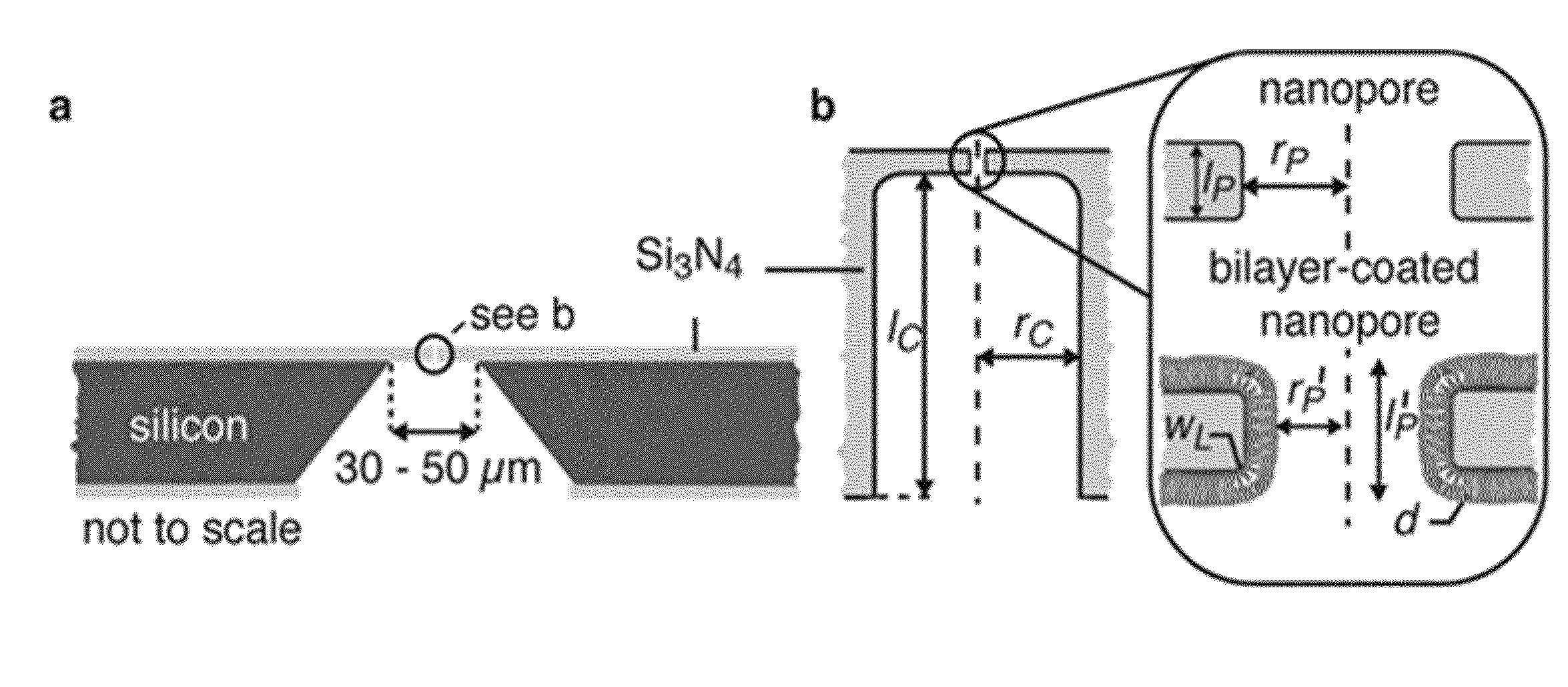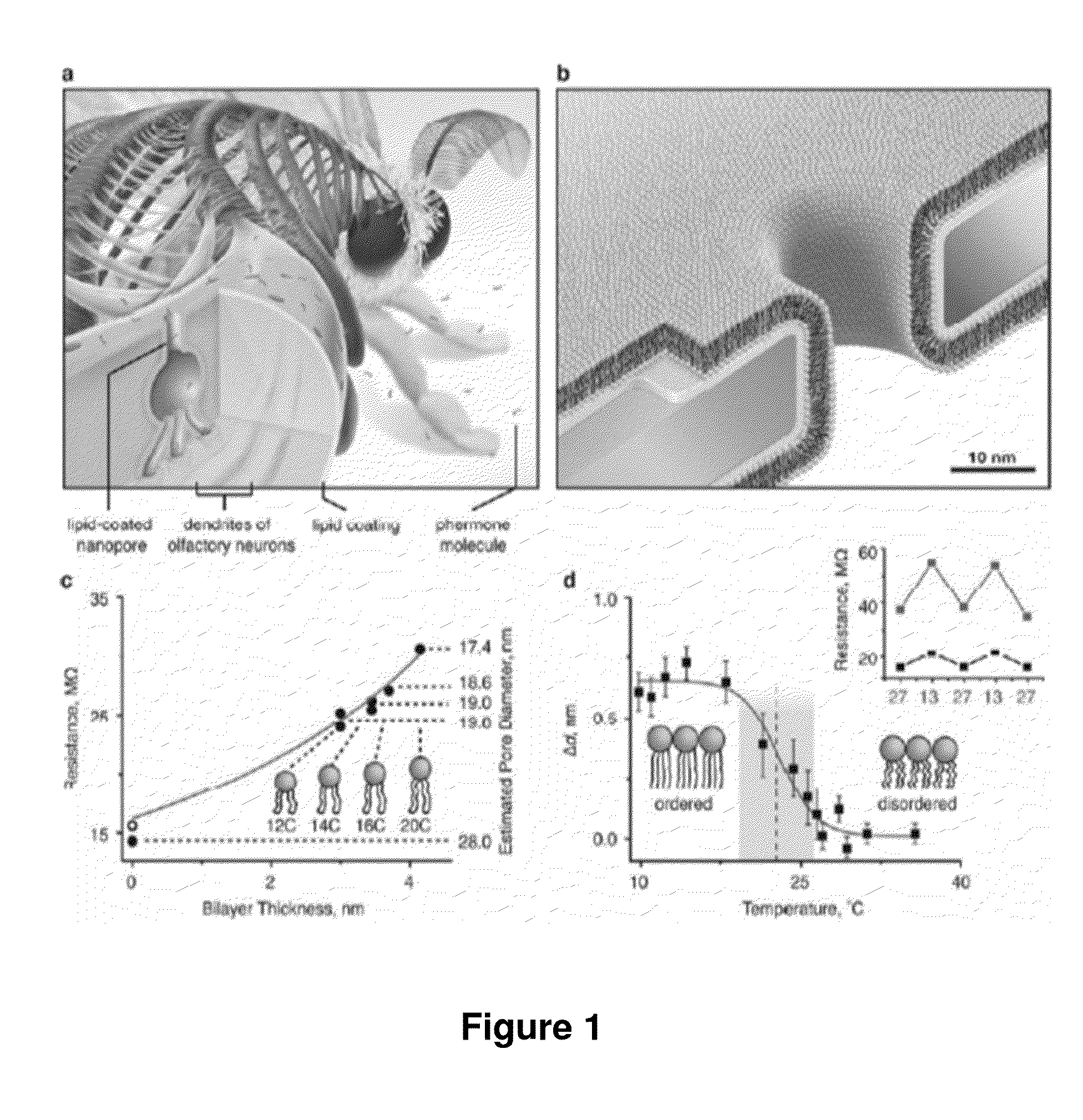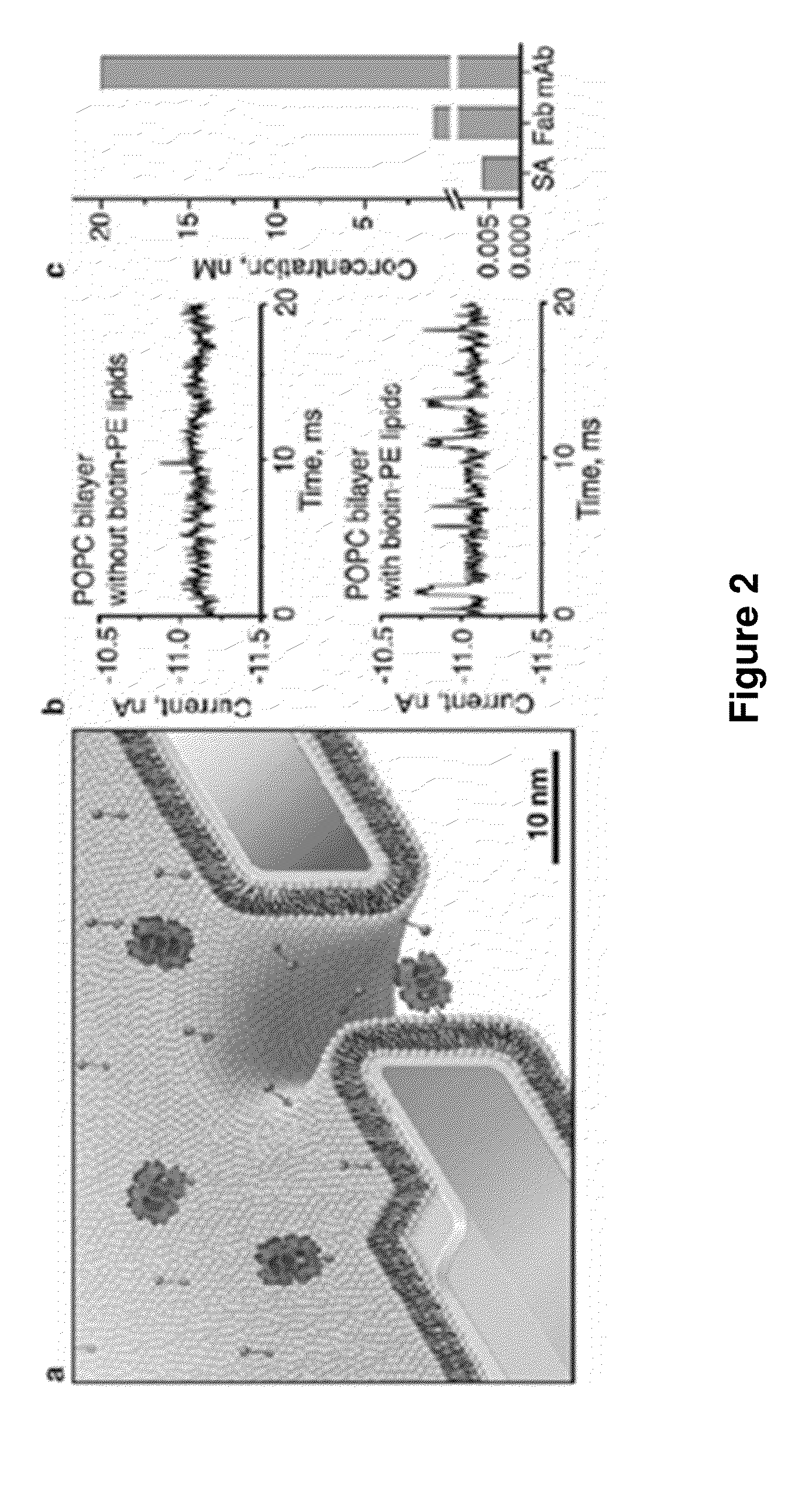Controlling translocation through nanopores with fluid wall
a technology of nanopores and fluid walls, applied in the direction of fluid pressure measurement, liquid/fluent solid measurement, peptides, etc., can solve the problems of incomplete time resolution of translocation signals, inability to detect and measure the performance of resistive pulses, and inability to accurately determine the amplitude and duration of resistive pulses. , to achieve the effect of measurable and detectabl
- Summary
- Abstract
- Description
- Claims
- Application Information
AI Technical Summary
Benefits of technology
Problems solved by technology
Method used
Image
Examples
example 1
Bilayer Coatings Enable Fine Tuning and Actuating Pore Diameters
[0137]To create lipid bilayer-coated nanopores (FIG. 1b), we exposed silicon chips that contained a single pore through a silicon nitride window to an aqueous suspension of small unilamellar liposomes40-43. Spreading of these liposomes on the Si3N4 window and on the walls of the nanopore (see Supplementary Sections S1-S3) created a bilayer coating and reduced the nanopore diameter. The thickness and surface chemistry of this coating can be accurately controlled by the choice of lipids in the liposome preparation. For instance, the bilayer thickness is fine-tuned by the length and the number of double bonds in the hydrocarbon tails of the lipids (FIG. 1c), whereas the surface chemistry is controlled by the nature of their polar head groups (see Supplementary Section S4).
[0138]The capability of fine-tuning the diameter of nanopores is illustrated by the red curve in FIG. 1c. This curve resulted from a best fit of the data...
example 2
Lipid Anchored Ligands Concentrate Specific Analytes and Enable their Translocation
[0141]In addition to fine-tuning and actuating the diameters of nanopores, bilayer coatings provide a straightforward strategy to render nanopore recordings specific for certain analytes by functionalizing the bilayer surface with ligands or receptors. FIG. 2 illustrates that adding defined mole fractions of lipids with desired functional groups (here, biotinylated lipids) during the formulation of liposomes and the subsequent formation of a bilayer coating42 can control the surface density of ligands in and around the pore. These lipid-anchored ligands, which were mobile within the fluid sheet of the lipid bilayer, could concentrate dilute analytes from the bulk solution to specific ligands on the bilayer surface and deliver these analytes to the pore by two-dimensional diffusion (FIG. 2a,b). Compare the lipid coating of olfactory sensilla in insect antenna, which contributes to the extremely sensiti...
example 3
Bilayer Viscosity Controls and Prolongs Translocation of Lipid-Anchored Analytes
[0143]The capability of moving captured analytes through pores with fluid walls made it possible to obtain the translocation time, td, through the pore as well as the corresponding amplitude of the resistive pulses, ΔI. This information is unique to the fluid nanopore coatings introduced here; previous reports on nanopore recordings with specific, surface-attached binding groups captured analytes on permanently fixed positions4,5 and did not allow translocation of bound analytes thereby excluding the possibility to determine td or to relate ΔI to the molecular volume of the bound analyte. An additional benefit of translocating analytes that are bound to a lipid anchor emerges if the intrinsic translocation speed of the unbound analyte through a pore is too fast to resolve td and ΔI completely in time—a problem encountered previously by other groups26-28.
[0144]FIG. 2b and Supplementary Section S5 show tha...
PUM
| Property | Measurement | Unit |
|---|---|---|
| Length | aaaaa | aaaaa |
| Length | aaaaa | aaaaa |
| Fraction | aaaaa | aaaaa |
Abstract
Description
Claims
Application Information
 Login to View More
Login to View More - R&D
- Intellectual Property
- Life Sciences
- Materials
- Tech Scout
- Unparalleled Data Quality
- Higher Quality Content
- 60% Fewer Hallucinations
Browse by: Latest US Patents, China's latest patents, Technical Efficacy Thesaurus, Application Domain, Technology Topic, Popular Technical Reports.
© 2025 PatSnap. All rights reserved.Legal|Privacy policy|Modern Slavery Act Transparency Statement|Sitemap|About US| Contact US: help@patsnap.com



